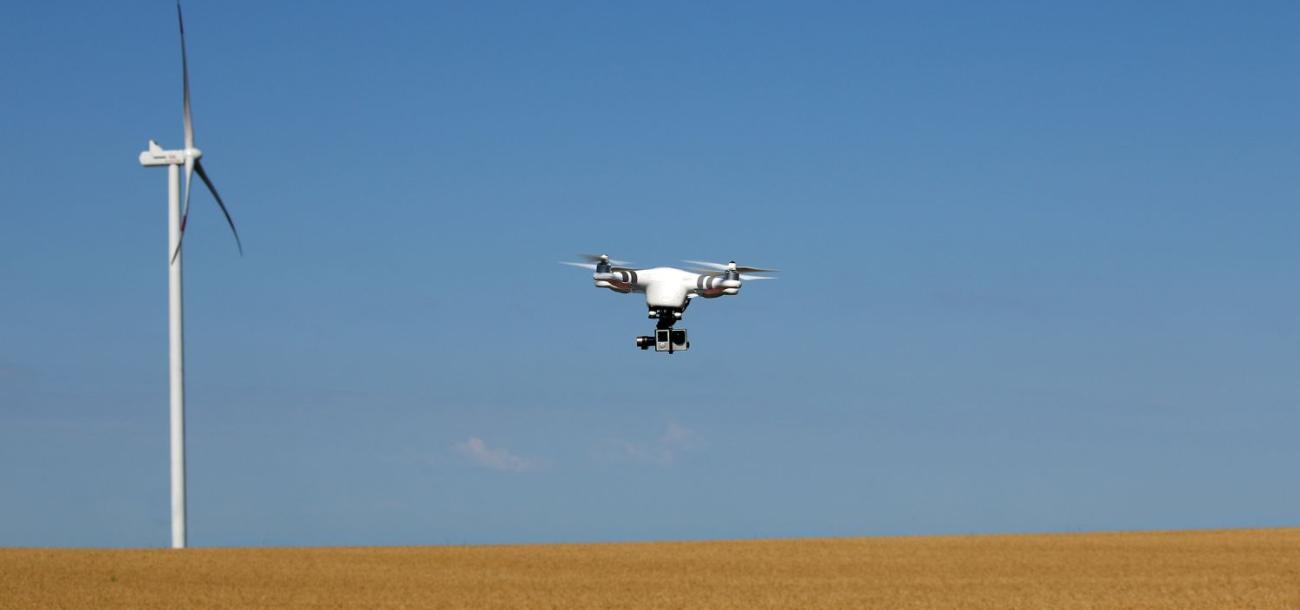Ignitis Renewables on wind farms maintenance in the age of smart technology: drones, AI and digital twins
Quickly gather the necessary data, analyse it, draw conclusions and assume the necessary measures. In the age of smart technology, this sequence of actions guarantees maximum efficiency in many areas, including wind energy. Ignitis Renewables, an international green energy company, is already ready for advanced maintenance of wind farms: drones will collect data on the condition of wind farms and artificial intelligence will carry out the analysis. Future plans also include performance testing using digital models.
"By 2030, Lithuania aims to generate all of its domestic electricity needs from renewable energy sources, with a substantial share of the electricity generated by wind farms. More innovative maintenance solutions will be necessary to ensure sustainable operation of wind farms. Advanced technologies will allow us to plan repairs in advance and prevent breakdowns. The main objective will remain the same – we will have to ensure uninterrupted operation of the power plants at maximum capacity,” states Mantas Marčiukaitis, the Head of Technological Systems at Ignitis Renewables.
Faster comprehensive inspection
The company’s representative sees a wide range of applications for drones in the maintenance of wind farms. According to the expert, these devices are extremely universal as they can be equipped with various types of cameras. Some can capture visual images, while others can capture infrared and even X-ray images.
"Drones are mainly used to inspect high-altitude objects such as the wings, tower and nacelle of wind farms. The focus is on the blades. They move at very high speeds and are constantly exposed to the environment, thus, they are the most likely to suffer from plaque or damage,” comments the company’s representative.
According to M. Marčiukaitis, the traditional method of blade maintenance was used for a long time – the technician has to stop the power plant and climb up to the turbine, and then, descending down the turbine with ropes, inspect all the blades one by one. With drones, the same work is done much faster and more efficiently.
"The wind farm still needs to be shut down, but for a much shorter period. A skilled drone technician inspects all the blades of the wind farm one by one and the images are stored on a server. Analysis of the images is then used to draw conclusions about the type and extent of potential damage,” says the technology expert.
Captures the smallest irregularities
M. Marčiukaitis talks about another innovation that will help collect more data on the state of wind farms. The initial assessment of the technical condition will be carried out by algorithms that identify deficiencies based on samples already in the database. The information will then be reviewed by engineers who make decisions on how to repair the wind farm.
The expert points out that modern cameras mounted on drones can capture 5-millimetre sized dents on a blade up to 85 metres long and up to 4 metres in diameter at its widest point. Meanwhile, an infrared camera can capture damage that is invisible on the surface. Its beams can penetrate as far as several centimetres into the part.
"The most common deficiencies are various deposits that prevent the wind farm from producing its maximum output. Cracks, dents and signs of mechanical fatigue are also recognisable,” says the representative of Ignitis Renewables. According to him, the need for drones will only grow as new wind farms are built. According to M. Marčiukaitis, optimising maintenance and more frequent remote maintenance of wind farms will be crucial to ensure their efficient operation and the shortest possible shutdowns.
Sensors also transmit data
Ignitis Renewables also keeps up with the latest technologies in the phase of planning wind farms, when it comes to assessing the wind energy resources in the area of the future wind farm. In the past, metal towers measuring wind speed are being replaced by LiDAR (Light Detection and Ranging) mobile measuring devices.
This laser-based technology can be used both for long-term wind speed measurements and for analysing the efficiency of wind farms. The main advantages of such instruments are the simple installation and relocation procedure, the higher measurement heights and the possibility to analyse the measured parameters in real time.
Meanwhile, wind farms are equipped with sensors that detect vibrations, displacements, temperature changes and other parameters. Most of these can be found in the nacelle and blades of the wind turbine.
In some more environmentally sensitive areas, parks require additional engineering solutions. In some cases, wind farm development is only possible with adequate protection for birds and bats. According to M. Marčiukaitis, one of the most advanced solutions in this field is bird radars.
"The radar's coverage area covers the entire wind farm. When birds approaching the buffer zone are detected, a signal is sent to the control system to slow down or shut down the power plant in question to allow the birds to pass safely, and when the radar detects that the area is empty, the power plant is restarted in its normal mode,” explains the expert.
Optimal management of maintenance of wind farms is not possible without complex and innovative information technology solutions. Ignitis Renewables has set up a dedicated control centre that receives the operational data for all wind farms. Here, not only the power generation parameters but also the status of individual components are monitored.
Simulations – not just in manufacturing
M. Marčiukaitis says that the wind energy industry is also starting to use digital models of wind farms and their individual components, also known as digital copies or digital twins. For example, to check the efficiency of power plants, such models input parameters for a specific location and the wind turbines built there, then monitor their dynamics as environmental conditions change, and check whether the performance generated by the real wind farm matches that of the digital model.
"This is another solution to ensure that wind farms produce as much electricity as planned. Research is still ongoing, but if the efficiency proves out, we will use digital models of wind farms in the future,” comments the technology expert at Ignitis Renewables.





